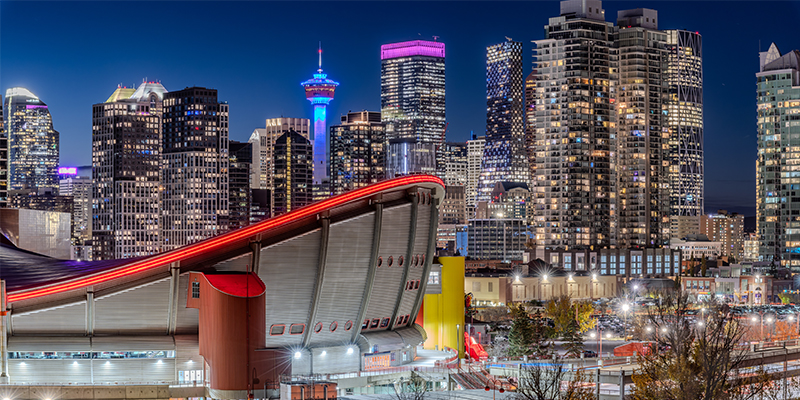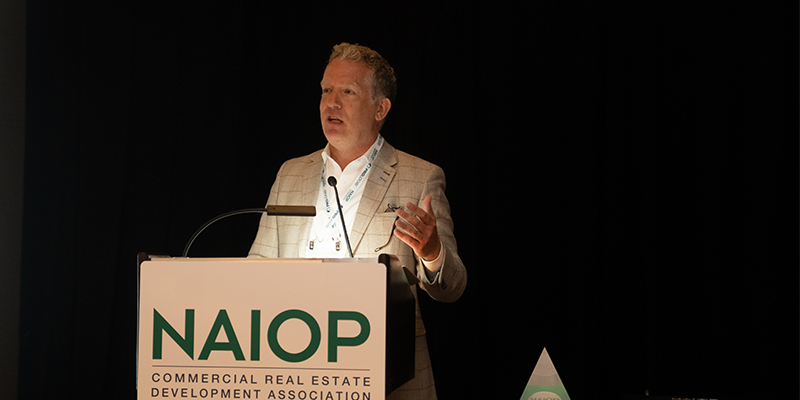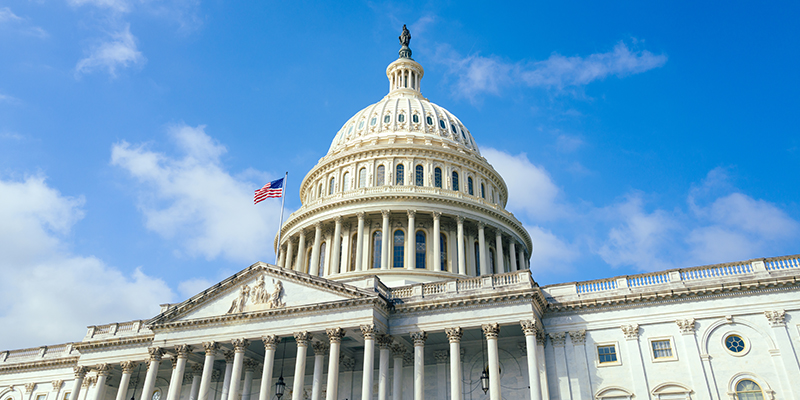A devastating natural disaster, followed by a sudden (and equally devastating) recession, followed by a global pandemic.
This trifecta of horrors sent Calgary into a tailspin for nearly a decade.
Now the largest city in the Canadian province of Alberta is rebounding in a big way. And the commercial real estate industry not only is riding the bounce-back wave; in many ways, it’s steering it.
That was made clear this week during a CRE Talk at NAIOP’s CRE.Converge in Las Vegas.
Here are three key takeaways from the discussion.
The Long Rebuild
A catastrophic flood that struck Calgary in June 2013 led to multiple deaths, resulted in more than 100,000 residential evacuations and caused an estimated $6 billion in damage.
The downtown area was particularly hit hard – and that gut punch got even more painful a year later when a sudden drop in oil prices resulted in mass job losses in the oil and gas industry, which has long been Calgary’s economic lifeblood.
Then with the city in the midst of a long recovery, the COVID-19 pandemic hit, stopping that recovery in its tracks.
Fast-forward to today, and Calgary is bustling again. So much so, that more than 100,000 people are migrating to the city annually – a reality that has forced the construction industry to shift into high gear.
“Most of the people in Canada who are relocating [within the country] are leaving the least-affordable cities like Vancouver, Montreal and Toronto. The cities that are benefiting the most are Calgary and Edmonton,” said Nicholas Dykstra, senior associate and urban designer from the Calgary-based firm O2 + Planning and Design. “And that is mostly because of the housing affordability gap. Wages are high in Alberta, and housing is relatively cheaper.
“But it’s been very hard for the construction sector to keep up with [the population increase]. And there’s a lot of pressure to put a lot of those people in already well-served infrastructure.”
The primary response to this quandary? Large, purpose-built rental towers, particularly in neighborhoods that ring the downtown core.
“The rental vacancy rate is forecast to be very low for a very long time,” Dykstra said. “That has added quite a bit of confidence in the development industry for purpose-built rentals – something that our market hasn’t been building for 60 years.
“This is mostly happening – actually, exclusively happening – in the areas around the downtown core. And [developers] are getting increasingly bold and increasingly confident, and [the construction is] increasingly of higher quality.”
Let’s Try Something Different
Although it now sports a population of 1.5 million, Calgary is still a small city by traditional standards.
The amount of workspace available suggests otherwise.
Brian Horton, principal and senior urban planner at O2 + Planning and Design , said Calgary has 44 million square feet of office space in the downtown area alone.
That’s more than Vancouver, Philadelphia and even Los Angeles.
With this abundance of space, city government officials have instituted an interesting development incentive program to convert any excess space into other uses.
For instance, Dkystra said developers are receiving $75 per square foot of office space that’s transformed into residential space; $60 per square foot for conversion into a hotel or senior facility; and $50 per square foot to retool office units into schools or performing arts venues.
In addition to finding new (and important) uses for existing office space, there’s been a push in Calgary to renovate aging structures and retrofit them with modern conveniences to entice new tenants.
“We’re seeing investment in refurbishing our older buildings with amenities to attract new industry – tech firms, design firms, engineering,” Horton said.
Added Dykstra with a hint of a smile: “They’ll take a boring 1980s-built office building, put graffiti in the lobby and a dog day care on the mezzanine, and all of a sudden, everybody wants to rent it – and for a higher price.”
Break Out the Wrecking Ball?
At the nadir of Calgary’s near decade-long downturn in 2021, Dykstra said there was 14.3 million square feet of vacant office space – almost exactly one-third of the supply.
That 33.2% figure dipped to 30.2% in 2023, but that’s still a lot of empty space to fill, convert or renovate. Too much, in fact.
That leaves one last option: demolition.
On the surface, it seems like a drastic move. In fact, it’s part of a planned, long-term strategy, one tied to increasing property valuations in both residential and commercial real estate.
“The goal of the City of Calgary was to increase the overall property value assessments by $12 billion by 2031 … and reduce office vacancy rate by 14% by 2031,” Dykstra said. “That’s not through regrowth of the office sector, but rather the retraction of office space — eliminating some of those 44 million square feet of space.”
Industrial, office, mixed-use, multifamily. Networking, education, project tours and special events. It all converges at NAIOP’s fall conference! Save the date for CRE.Converge 2025, Sept. 8-10, at the Sheraton Centre Toronto, Toronto, Ontario.
This post is brought to you by JLL, the social media and conference blog sponsor of NAIOP’s CRE.Converge 2024. Learn more about JLL at www.us.jll.com or www.jll.ca.









